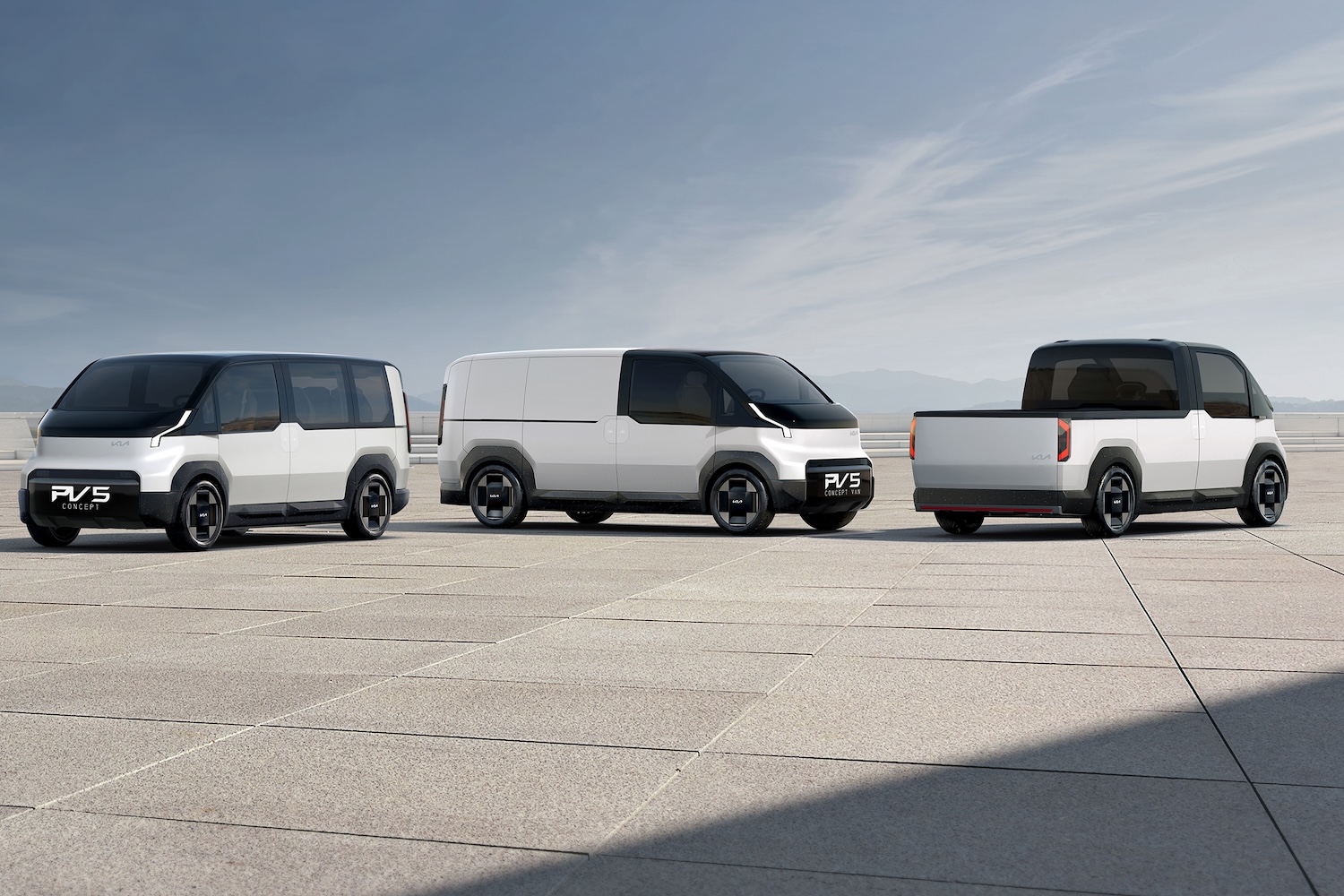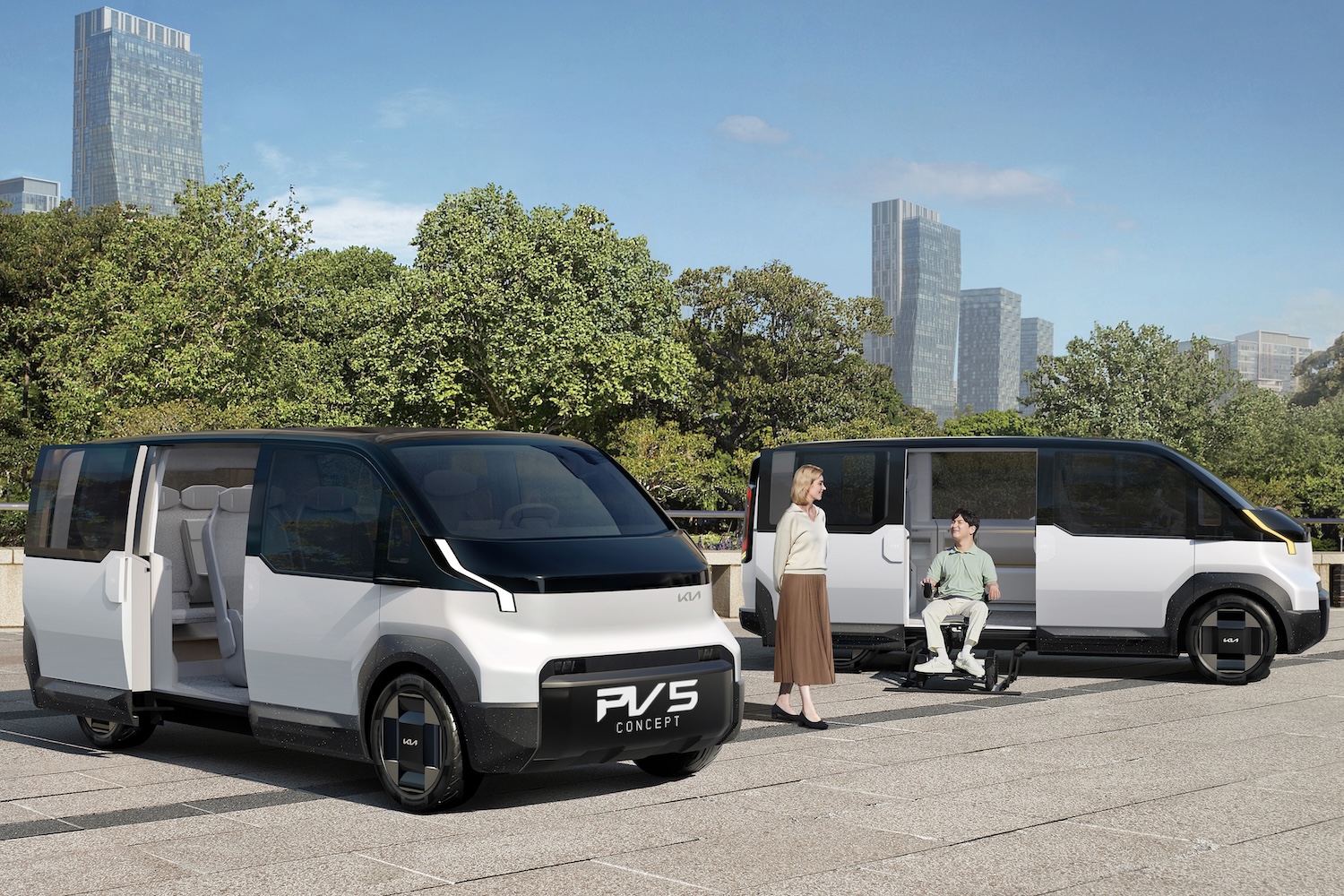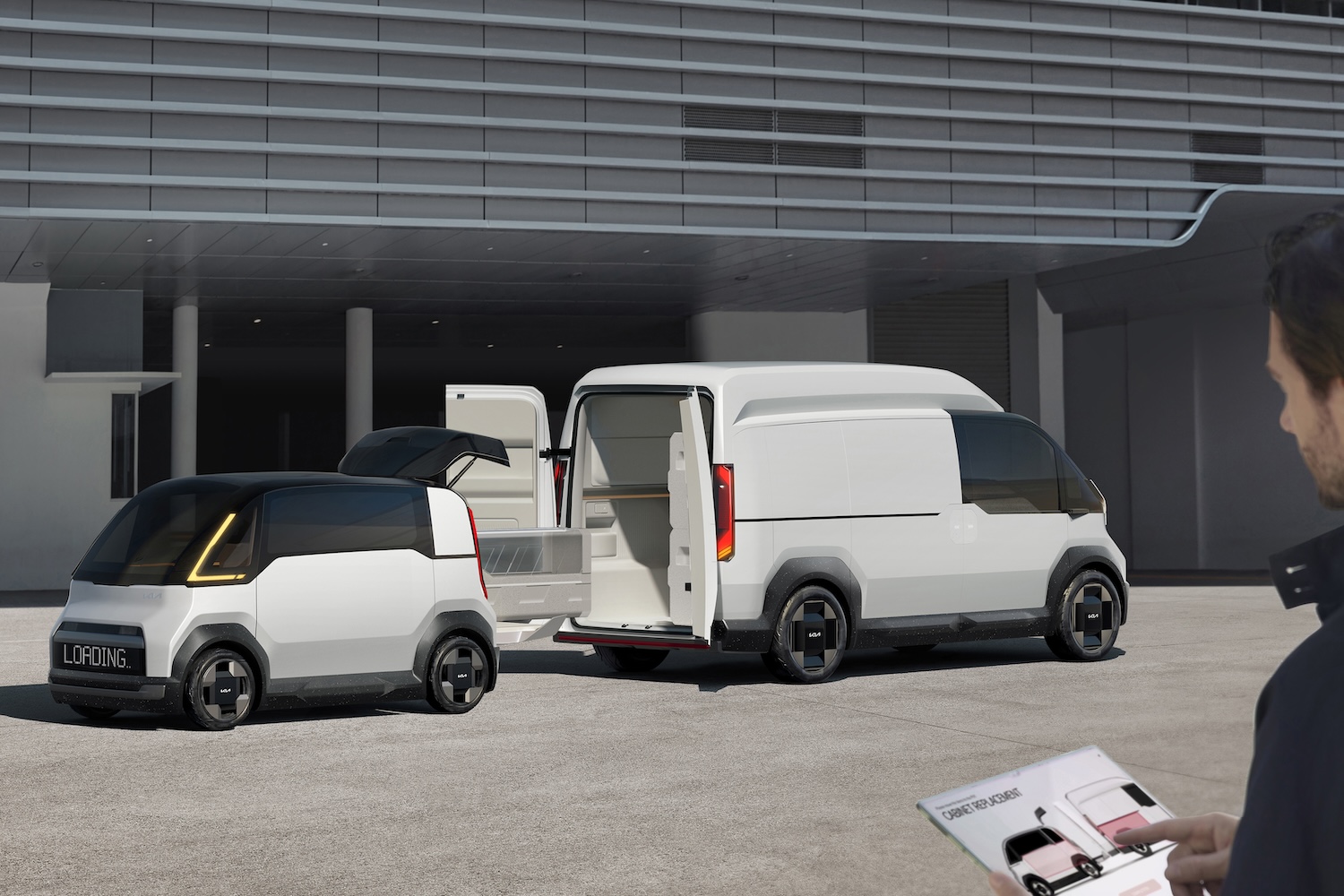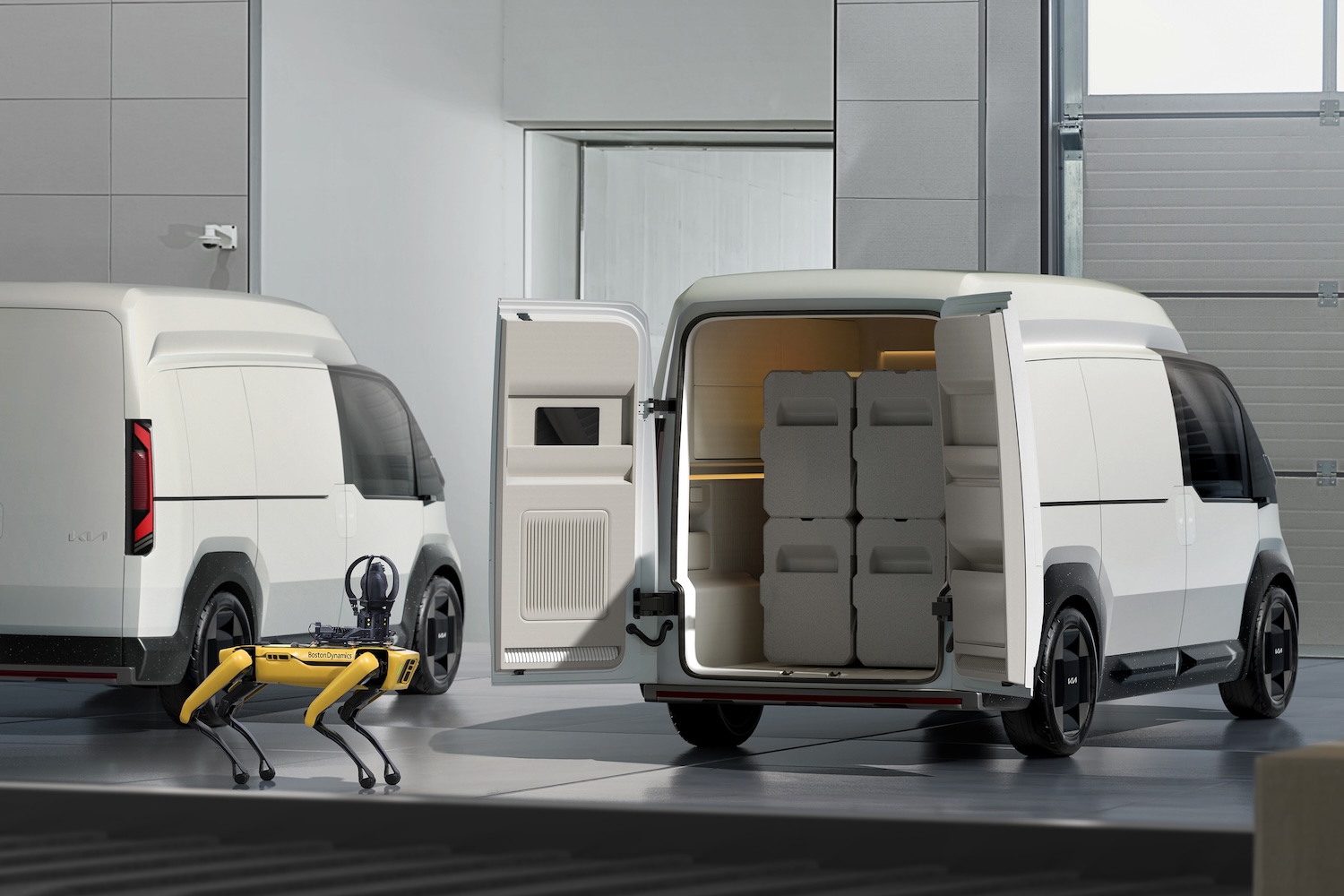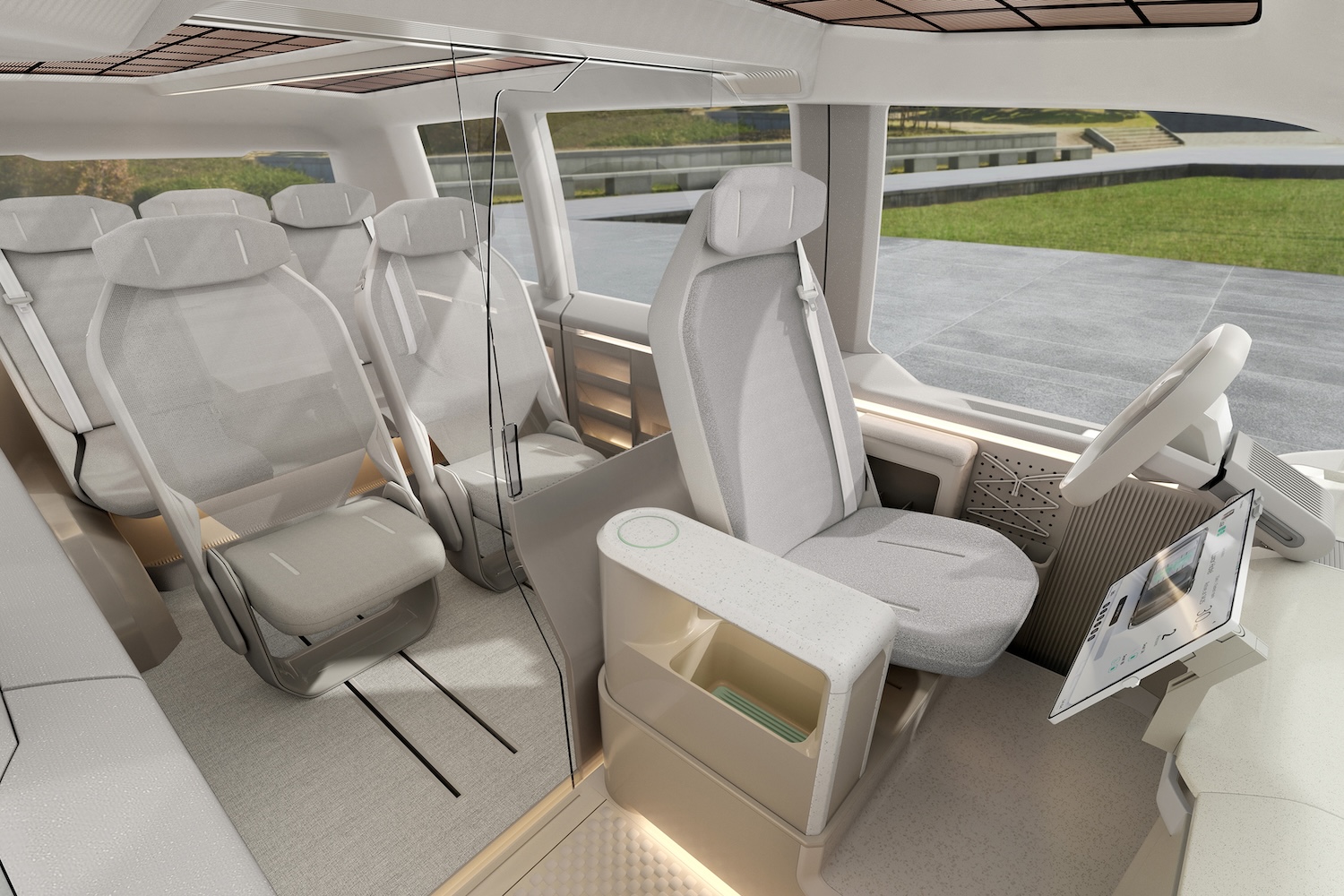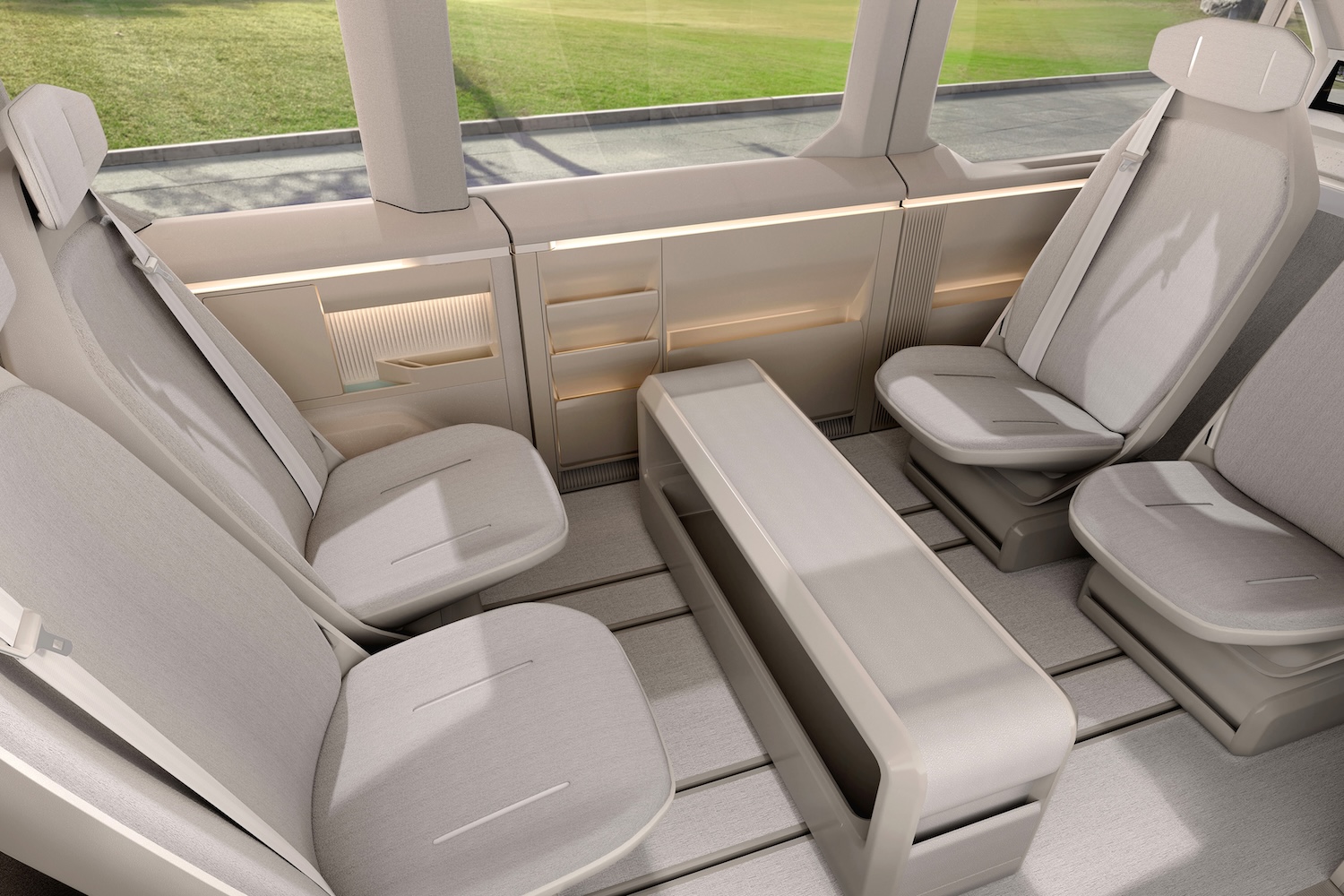Kia has announced the Platform Beyond Vehicle (PBV) range of futuristic commercial vehicles (CVs) at the Consumer Electronics Show (CES) in Las Vegas, marking the Korean manufacturer’s first foray into the business sector.
Promising hyper-connected, potentially self-driving electric vehicles (EV) with clever modular bodies and software-to-everything (SDx) technology, the first machine to launch under the PBV strategy will be the PV5, slated for production in 2025.
A taxi one minute, a cargo van the next
Ostensibly, the PV5 will be sold in four main body types: Basic, Van, High Roof and Chassis Cab. However, clever modular construction and hybrid electromagnetic/mechanical couplings means the bits of the bodies behind the PV5’s fixed cab, or ‘driver zone’, can be switched – so you could drive the vehicle as a taxi in the day, a delivery van at night and then a personal recreation vehicle at weekends.
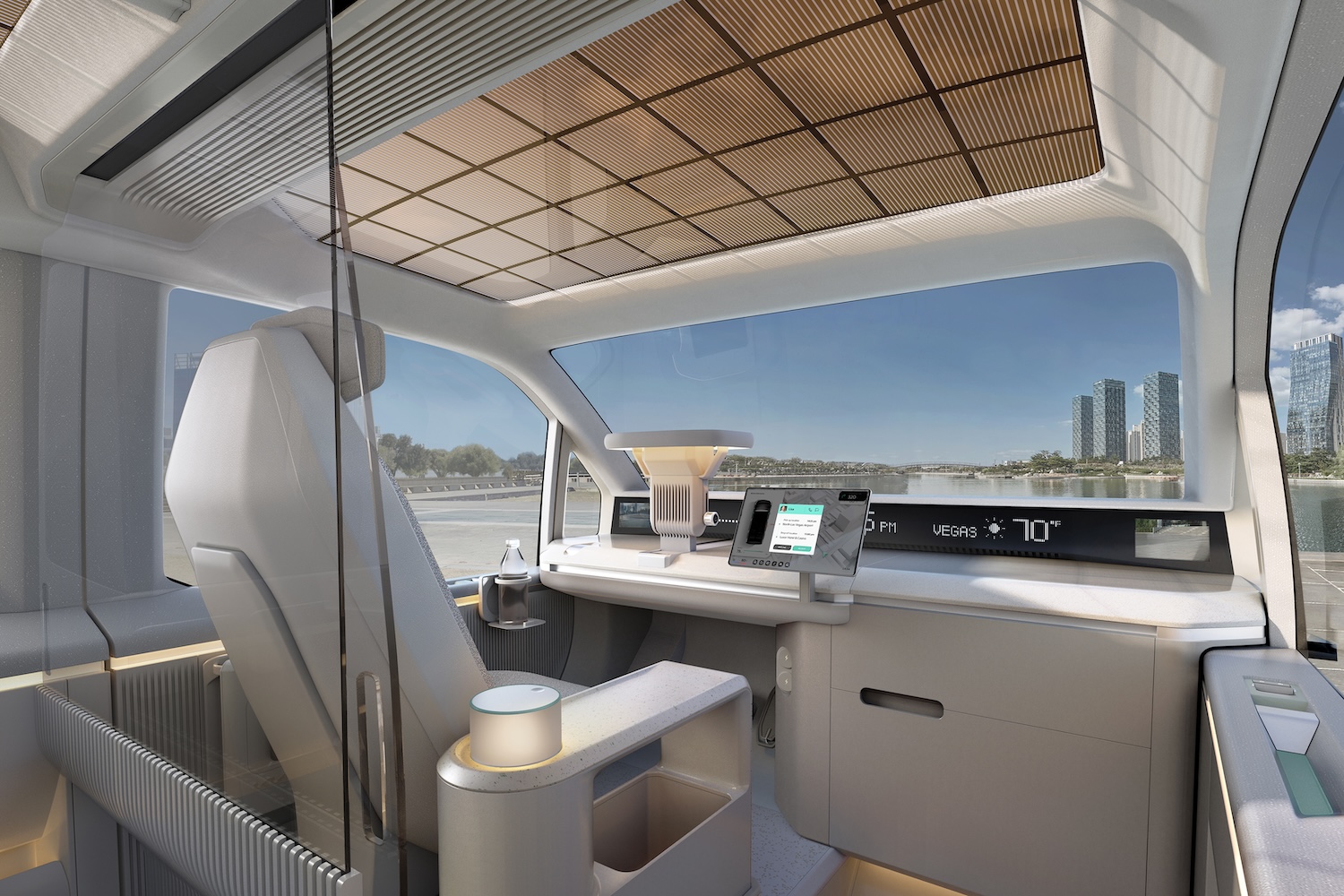
Kia says all PBVs will be capable of this body-switching technology, which means the larger PV7 and smaller PV1 follow-up vehicles should match the PV5 for versatility. Going on its form without concentrating on its modularity, the PV5 has large doors with pillarless openings, making getting into and out of the vehicle easy. That should suit its function as a ride-sharing or hailing vehicle.
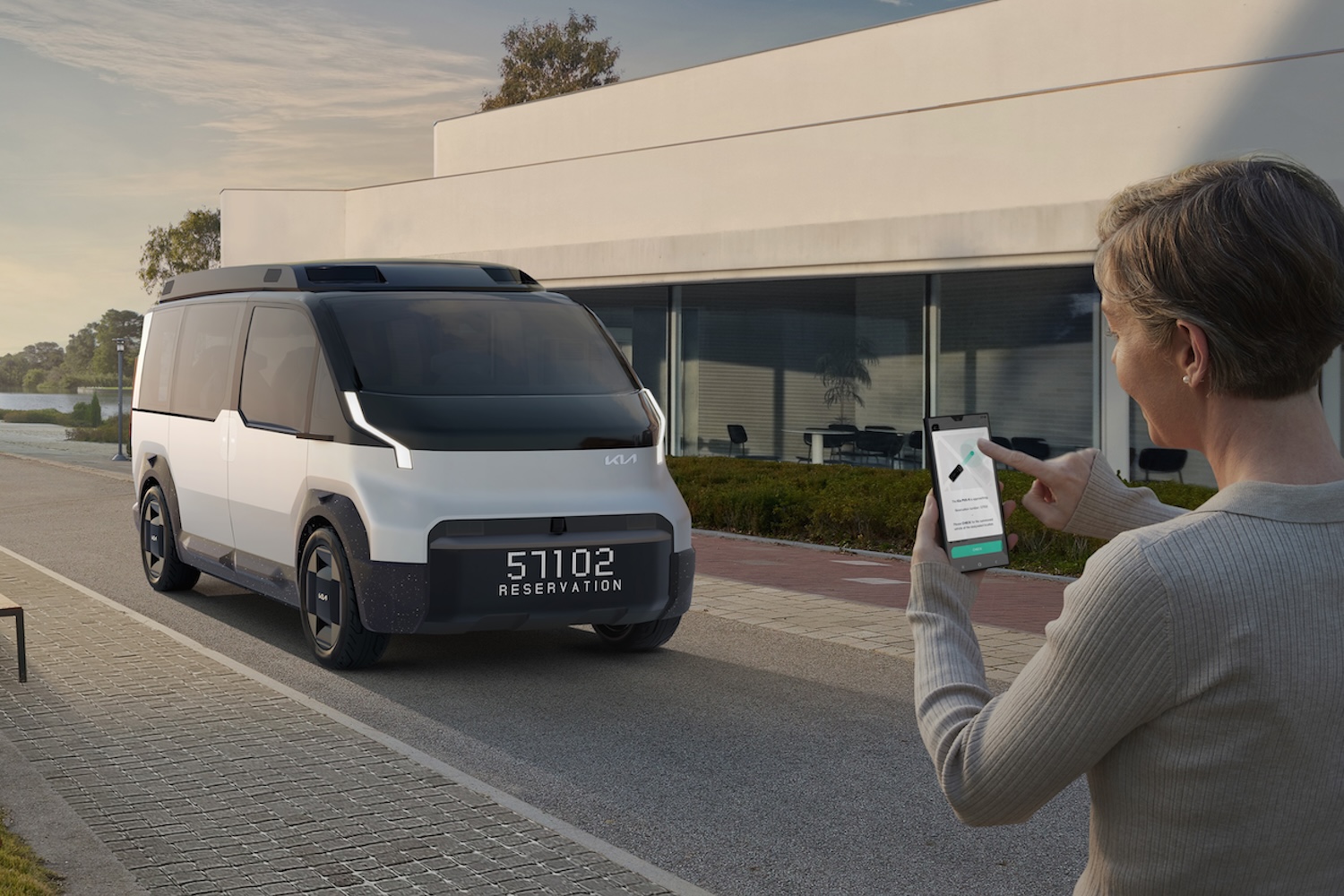
Its electric vehicle (EV) form means it has a long wheelbase and a flat floor, so the interior will be highly versatile – whether being used for human passengers or other types of cargo.
Steering wheel is a lamp
At the front, Kia has given the dashboard has a desk-like appearance and the PV5’s steering wheel folds to double up as a desk lamp. A similar system can be seen in the current Ford Transit, in which the wheel folds to form a flat surface for writing or eating from more easily. Kia is even planning a full Robotaxi version of the PV5 in the fullness of time, which would be an autonomous ride-hailing experience for its passengers.
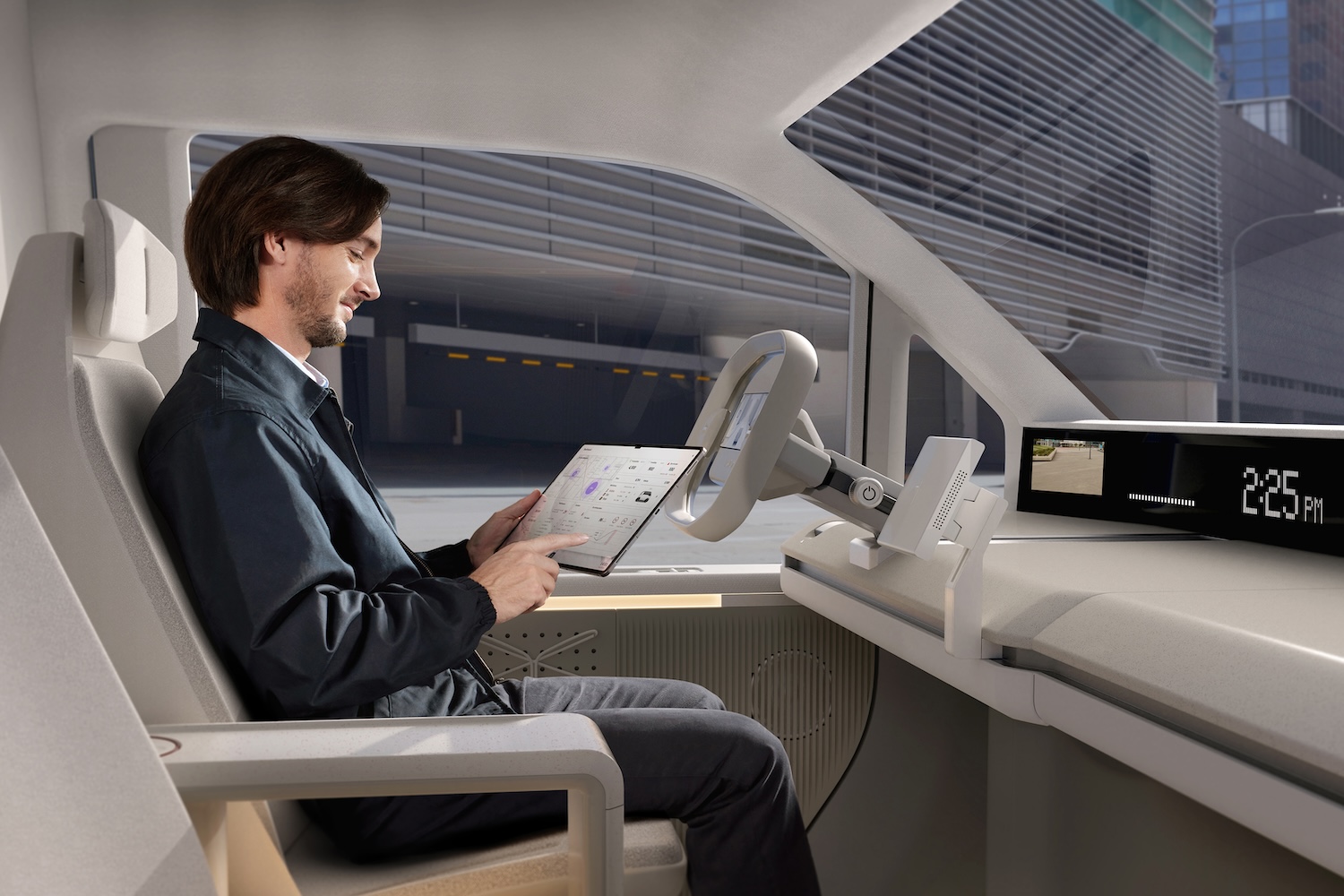
The longer-term aim for all the PBVs is they will be part of fully connected business software solutions, and even hyper-connected ‘smart cities’.
‘Beyond the traditional concept of automobiles’
Ho Sung Song, Kia’s president and CEO, said: “Kia’s PBV business represents our vision of going beyond the traditional concept of automobiles by fulfilling the unmet needs of diverse customers and communities through optimised vehicles and services catering to specific market and business circumstances.

“Kia PBVs will be an enabler of business innovation thanks to our customer-centric management system, EV mass production expertise, and the Hyundai Motor Group’s rapidly developing SDx strategy and related future businesses. We are excited to show that we are fully prepared to become the first mover in the global PBV market.”
All of the Kia PBVs revealed at the CES over in Vegas have very clean, minimalist styling. The company says this wasn’t purely an aesthetic decision, as the design of the vehicles has been inspired by “robust, simple and clever tools” in other industries.


